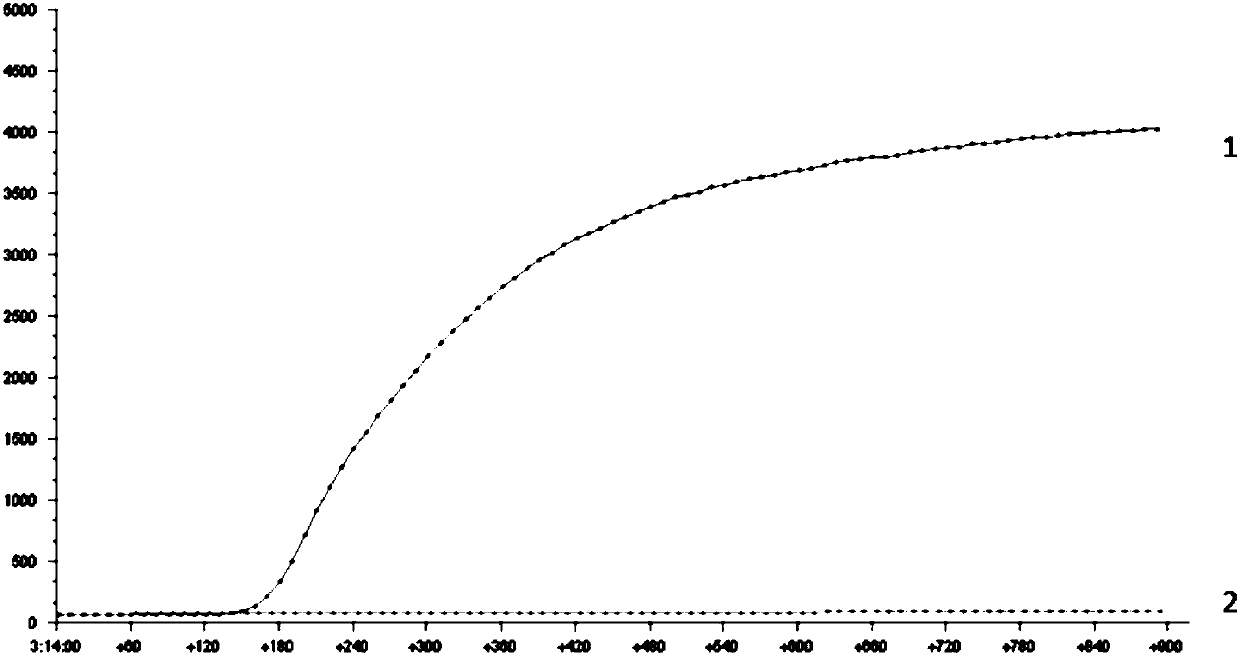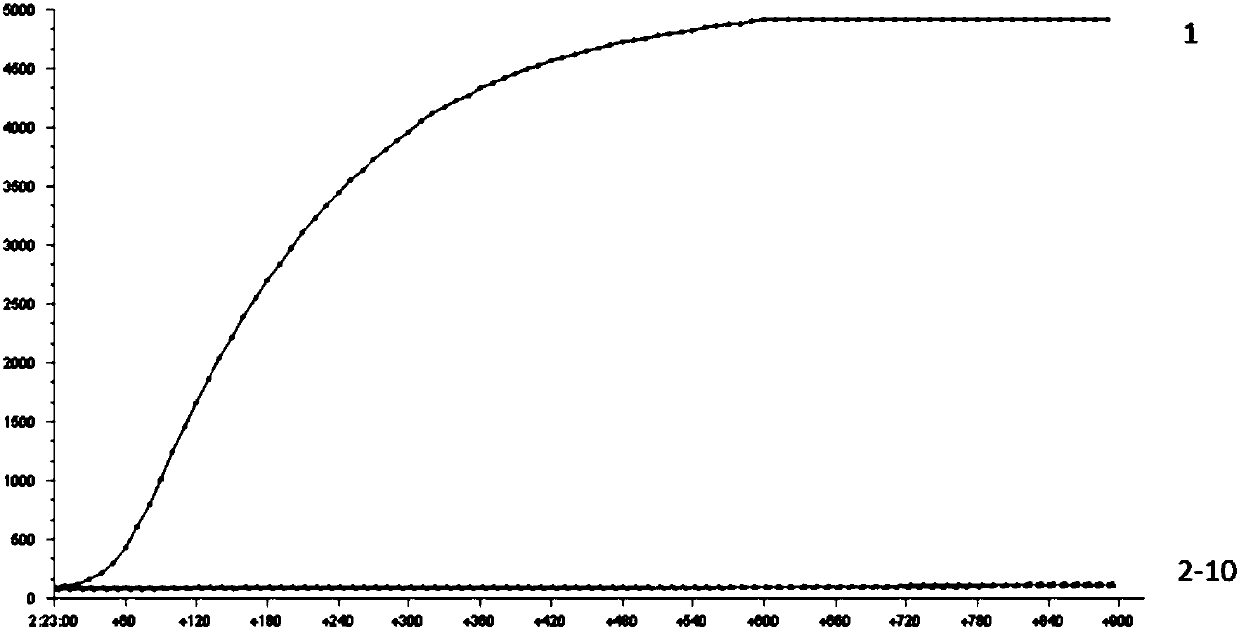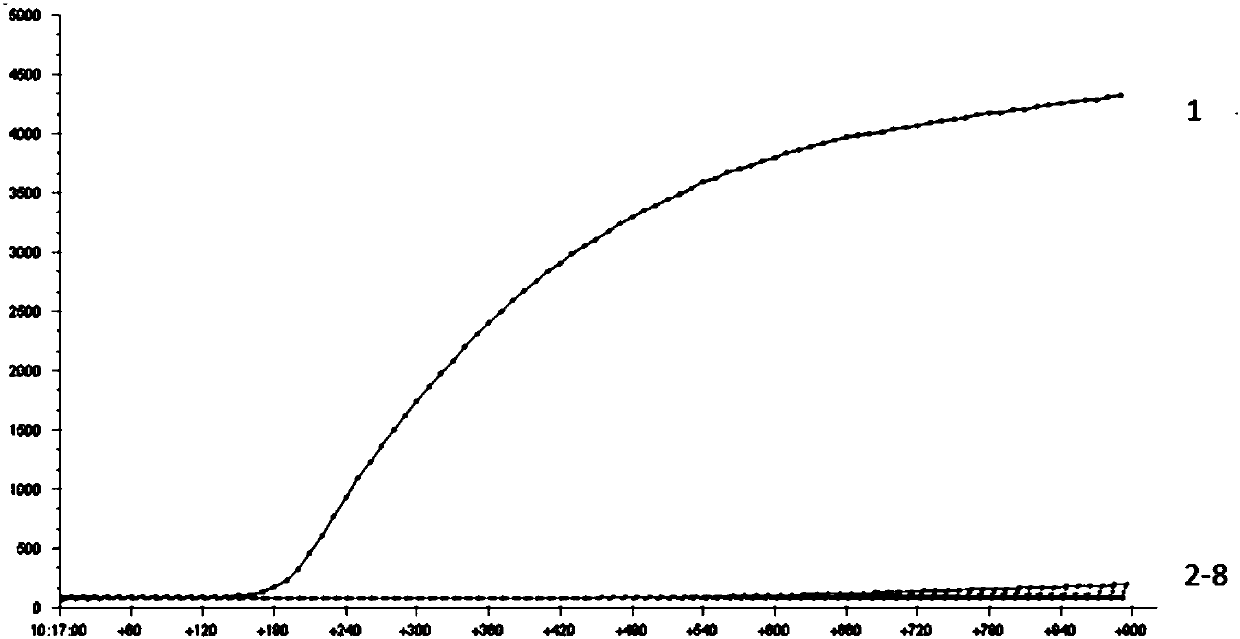RPA primer, probe, kit and detection method for detecting staphylococcus aureus
A Staphylococcus aureus technology, applied in biochemical equipment and methods, DNA/RNA fragments, recombinant DNA technology, etc., can solve the problem of not being used in the detection and application of Staphylococcus aureus, and achieve the effect of high sensitivity
- Summary
- Abstract
- Description
- Claims
- Application Information
AI Technical Summary
Problems solved by technology
Method used
Image
Examples
Embodiment 1
[0032] Embodiment 1: the selection of target gene and RPA primer probe
[0033] Use bioinformatics knowledge and related analysis software to analyze common virulence genes of Staphylococcus aureus, such as nuc , coa , clfA etc., through comparative analysis of these genes of Staphylococcus aureus and other microorganisms, the clfA As the target gene to be selected, and select the sequence fragment with higher specificity. Design specific primers and probes according to the design requirements of RPA for primers and probes, and then compare the sequences of the primers and probes with the species with high homology of Staphylococcus aureus, and select the primers with high specificity and probes. Then compare and analyze the primers and probes to be selected in the same process, and select a combination with high specificity and high amplification efficiency. The primers and probes in this example were synthesized by Shanghai Bioengineering Co., Ltd.
[0034] Primer of...
Embodiment 2
[0044] Embodiment 2: the kit that detects the RPA of Staphylococcus aureus
[0045] The present embodiment provides a kind of test kit that detects the RPA of Staphylococcus aureus, comprises for clfA Gene primers, probes, and RPA reaction buffer. The primers may include one of the upstream primer Seq ID No.1: 5'-CCTTGTGGTTTTATTTTCAAGTTTAGATGAG-3' and the downstream primer Seq ID No.2: 5'-CCCATCATTAAGCAATAATTATACAAACCC-3' or the upstream primer Seq ID No.1, A base sequence with a single sequence homology of 50% or more in the complementary strand sequence of the downstream primer Seq ID No.2 sequence. The probe sequence is SeqID No. 3: 5'-GTGGTTTTATTTTCAAGTTTAGATGAGCACTCAAGACCTTCTAA-3' or a base sequence with a single sequence homology of 50% or more in its complementary strand sequence. Preferably, the position of 30 bp at the 5' end of the probe sequence Seq ID No.3 is modified with dSpacer, and the thymines on both sides of the dSpacer molecule are replaced by fluorescen...
Embodiment 3
[0046] Embodiment 3: the RPA method of Staphylococcus aureus
[0047] (1) Extract the genomic DNA of the sample to be tested
[0048] In this example, Staphylococcus aureus ATCC 27217 was inoculated into nutrient broth, placed on a shaker, and cultured overnight according to the optimum growth temperature of each bacterium, and 1 mL of the culture solution was added dropwise to a 1.5 mL centrifuge tube at 12000 rpm. Centrifuge for 2 minutes, discard the supernatant, add 500 µL sterile saline, suspend and mix well, centrifuge at 12,000 rpm for 1 minute, discard the supernatant, add sterile saline repeatedly, centrifuge again, and discard the supernatant. Add 50 µL of normal saline, place in a water bath at 100°C for 10-15 minutes, and centrifuge at 12,000 rpm for 1 minute after cooling down to room temperature. The supernatant is used as the genomic DNA of the sample to be tested and stored at -20°C for later use.
[0049] In other embodiments, the sample can be grown and cult...
PUM
 Login to View More
Login to View More Abstract
Description
Claims
Application Information
 Login to View More
Login to View More - R&D
- Intellectual Property
- Life Sciences
- Materials
- Tech Scout
- Unparalleled Data Quality
- Higher Quality Content
- 60% Fewer Hallucinations
Browse by: Latest US Patents, China's latest patents, Technical Efficacy Thesaurus, Application Domain, Technology Topic, Popular Technical Reports.
© 2025 PatSnap. All rights reserved.Legal|Privacy policy|Modern Slavery Act Transparency Statement|Sitemap|About US| Contact US: help@patsnap.com



